Second to sapphires, topaz is the most common and widespread gemstone found in Tasmania. It has a very strong association with Devonian granites in northern and western Tasmania, but can be found in other rock types.
Tasmanian topaz deposits are reasonably well known because of the tin mining boom of the 1870s and 1880s. The majority of Tasmanian tin was also hosted by Devonian granites, and so alluvial prospectors often came across it while sluicing for tin. Flinders Island, the Blue Tier area and the Gladstone area are the most important occurrences, but topaz is also known from plenty of other localities, such as Bicheno, Coles Bay, the Stanley River, Moina and Mount Bischoff.
Flinders Island – Killiecrankie diamonds
The best known occurrence of topaz in Tasmania is in Flinders Island. It is abundant in tin placers such as Mines Creek near Tanners Bay, and Killiecrankie, where ‘diamonds’ have been known since at least the middle of the 19th Century, and appear to have even been passed off as real diamonds on occasion.
- Tasmanian topaz from Mines Creek, Flinders Island
- Tasmanian topaz from Killiecrankie, Flinders Island
- Tasmanian topaz from Killiecrankie, Flinders Island
Compared to topaz from elsewhere in Tasmania, Killiecrankie stones often have perfect clarity and can come in huge sizes. The stones are most often colourless, pale blue, pale pink, or occasionally pale green.
When I was over, I found that the easiest place to find some topaz was Mines Creek near Tanner Bay. There are old alluvial tin diggings in the area, and topaz is plentiful in the creek downstream of the mines, and can also be found in coarser gravel layers by the ponds. The classic locality and Fossicking Area at Killiecrankie Bay proper has been worked for a long time, and stones are harder to find. Still, if you wait for low tide and don’t mind wading, you can still clean out cracks that produce good stones.
Blue Tier and northeast
There are two additional designated Fossicking Areas in northeastern Tasmania where you can find decent topaz: Gladstone / Mt Cameron and the Weld River. I covered a bit about Gladstone in my previous post on smoky quartz, but the tools and methods you’d use are as I described in my previous post about Weld River Sapphires. Topaz, like sapphires, zircons, tin and gold, is heavier than quartz. This means that it tends to sink to the lowest possible point, and forms accumulations in classic sediment traps. Anywhere you find sapphires in the Weld River fossicking are you’ll also find topaz. However there are plenty of creeks and rivers that have fe or no no sapphires, but good topaz. Good places to try are creeks that were worked intensively for alluvial tin. You’ll need a prospecting licence if you fossick outside the designated Fossicking Areas.
- Tasmanian topaz
- Tasmanian topaz
- Tasmanian topaz
- Tasmanian topaz
- Tasmanian topaz
- Tasmanian topaz
In the Derby / Weldborough area, I’ve had good luck in
- Black Creek (Black Rivulet)
- The Cascade River and tributaries
- Main Creek
- The Ringarooma between Derby and Moorina, and
- The Weld River
Moina
Some of the tin mines in the Moina area also had topaz in the gangue. Interestingly, these are not in granite, but in Ordovician sandstones that have been altered by a nearby granite contact. The ore-bearing veins in the Shepherd and Murphy mine and in the Moina quarry were composed of tin-fluorite-topaz, with crystals up to 40 mm long.
I’ve personally never had a look there, and I believe the quarry is currently under lease and out of bounds.
Other occurrences
Topaz can occasionally be found on the beach at Coles Bay, particularly in the south side near the quarry and YHA. Please be mindful of the National Park boundaries. I’ve personally fossicked the occasional small but perfectly clear topaz crystal from reefs near the old Coles Bay quarry, at low tide. The National Park boundary is at the low tide mark, so fossicking below this is permitted.
There are reports of very good quality topaz in and around Bicheno, but I don’t know the exact location. Again, please be mindful of the park boundary, as it extends right up to Bicheno nowadays.
Topaz is listed as an accessory mineral at Mount Bischoff, and also as being present in the Stanley River tinfield (p. 2). The latter also contains sapphires. Unfortunately, the Stanley River is now under mining lease for over 1 km upstream of the Lower Pieman Road.
Finally, there are reports also of topaz in hard-rock tin mines in the Rossarden / Royal George area. I have no idea whether they occur also in the alluvial. If fossicking in Royal George, it’s advisable to restrict the time you spend in close contact with the mine workings due to their high uranium content (they’re quite radioactive). It’s advised that people not enter the underground workings due to the buildup of radioactive radon gas (pp 39, 40). Specimens from this locality should also be stored properly for the same reasons.
- Tasmanian Topaz after cutting
- Large Tasmanian sapphire and topaz
- Rough Tasmanian topaz
Getting your own Tasmanian topaz
Topaz is one of our most common, easy to find and rewarding gemstones. The easiest locality by far is the Weld River fossicking area. If you’re feeling more adventurous, I can recommend Black Creek, Main Creek, and further up the Weld River.
Dig behind obstructions such as rock bars or log jams, and in potholes. Keep your eyes peeled for coarse blackjack (spinel). If your shovel is coming out with plenty of coarse spinel, you’re digging in a good, natural sediment trap.
Good luck!
Did you find this useful? If you like the content at Apple Isle Prospector, feel free to get in contact, or leave a comment. If you enjoyed this article, then let others know by sharing it on Facebook or liking our Facebook or Twitter pages:

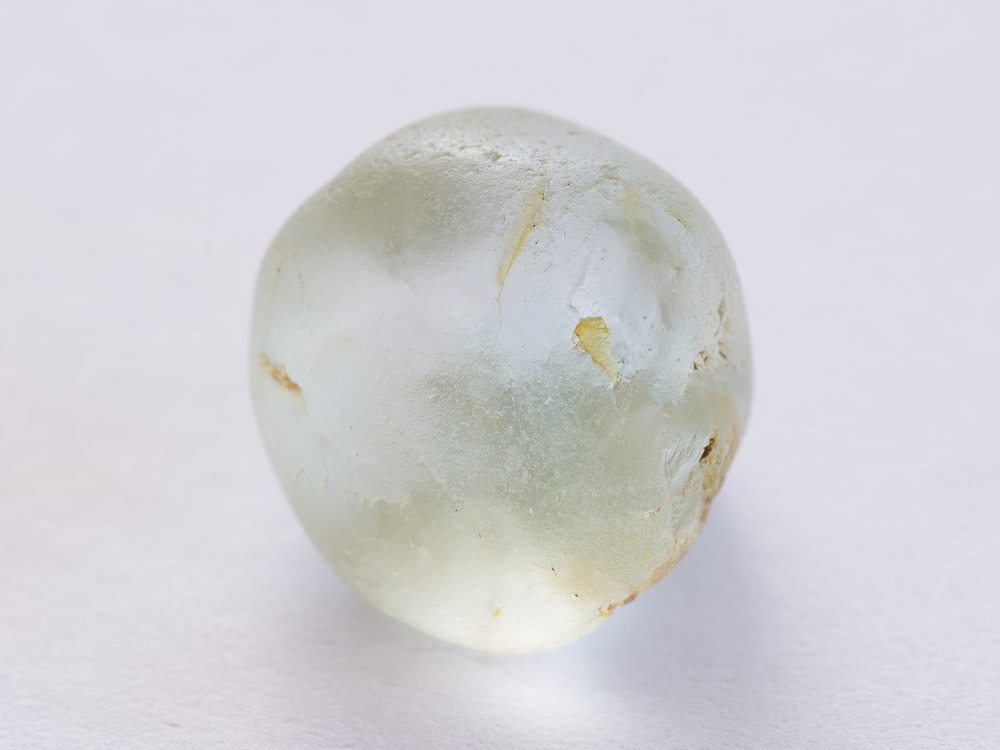

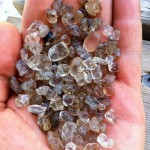
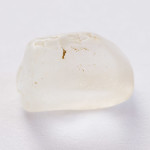
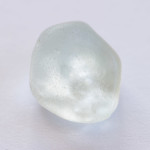
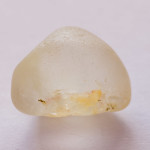
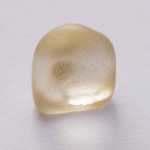
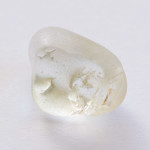
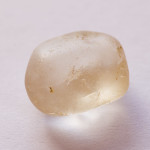
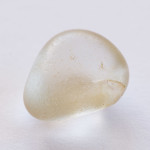
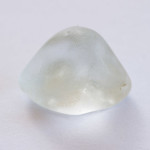
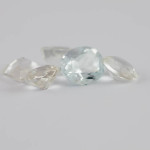
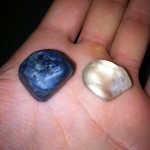
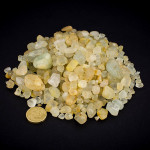
Hi Miguel
Will you be adding info about the last trip to Back Creek on your site?
Cheers
Ron
Hi Ron,
I put up a brief post about it at the Prospectors and Miners Association website.
Hey there.
Very exciting, would love to give it ago. Where would it be possible to hire gold pans/sivs etc needed to find them??
I don’t know of anyone who hires pans and sieves. You can buy them at some of the outdoor stores, such as Anaconda. A basic gold pan only costs about $15, and a basic set of gem sieves about $70, but it varies a bit depending on availability.